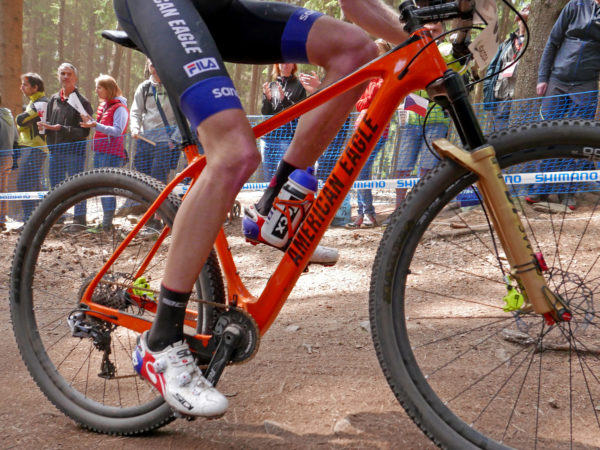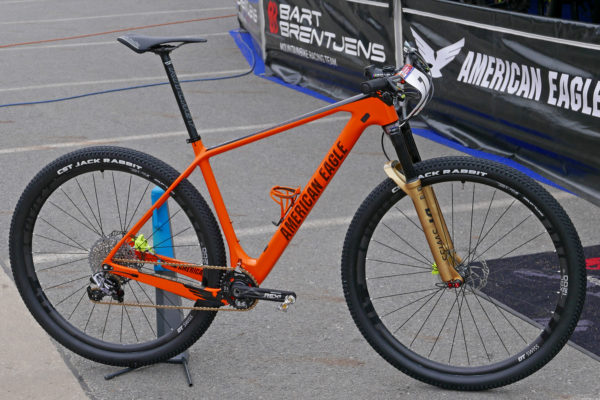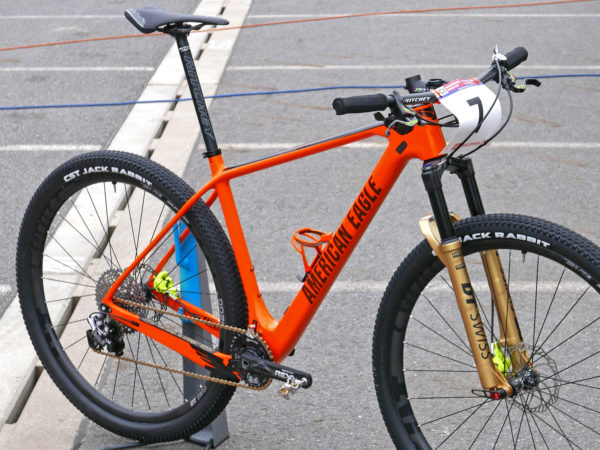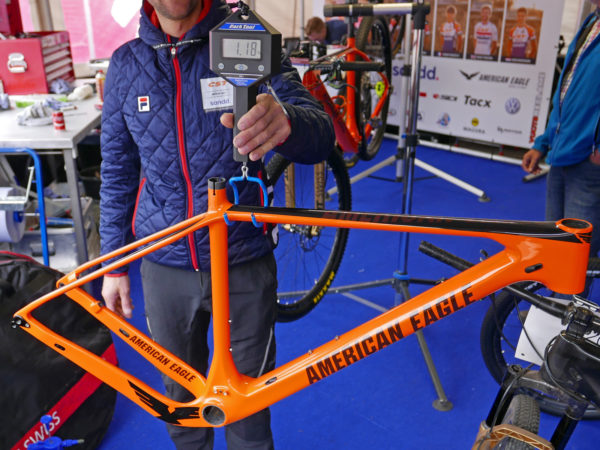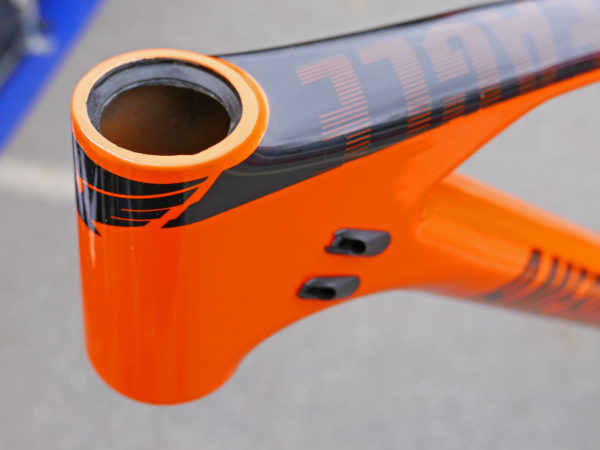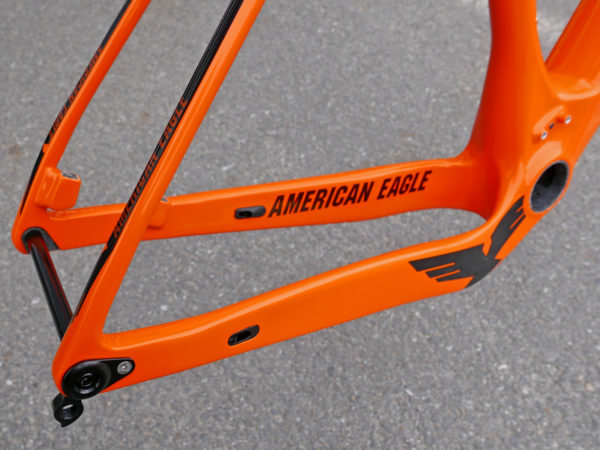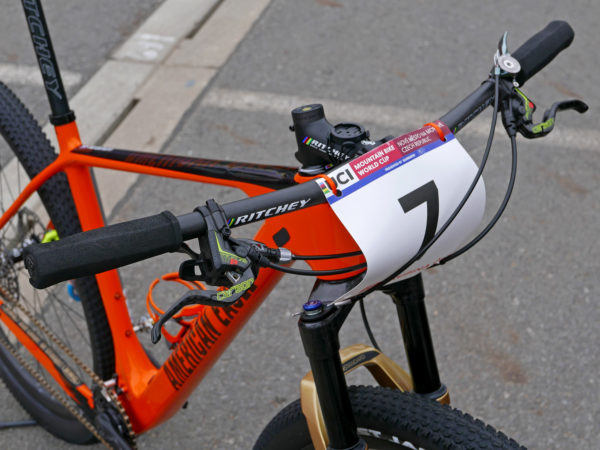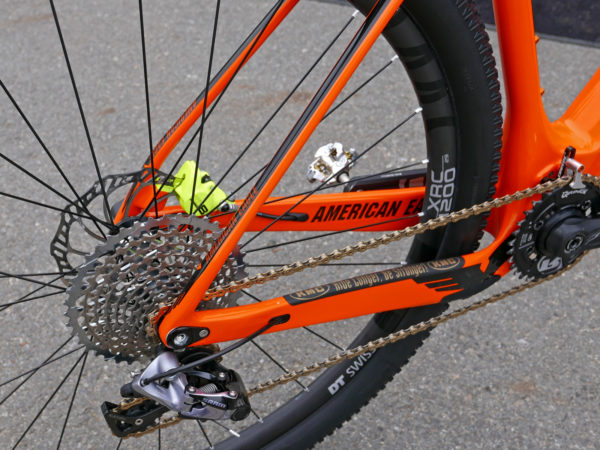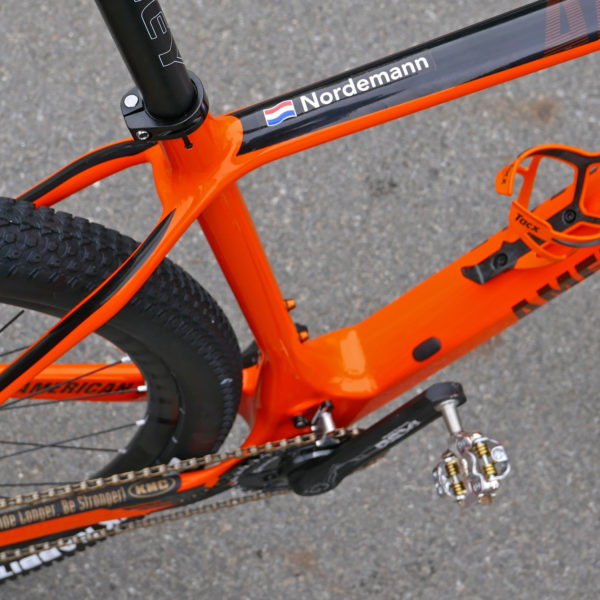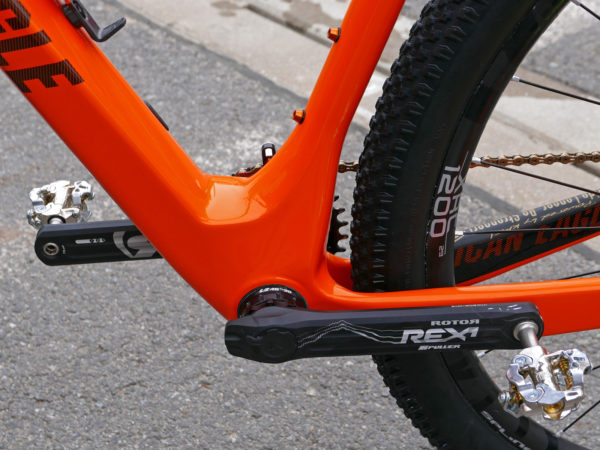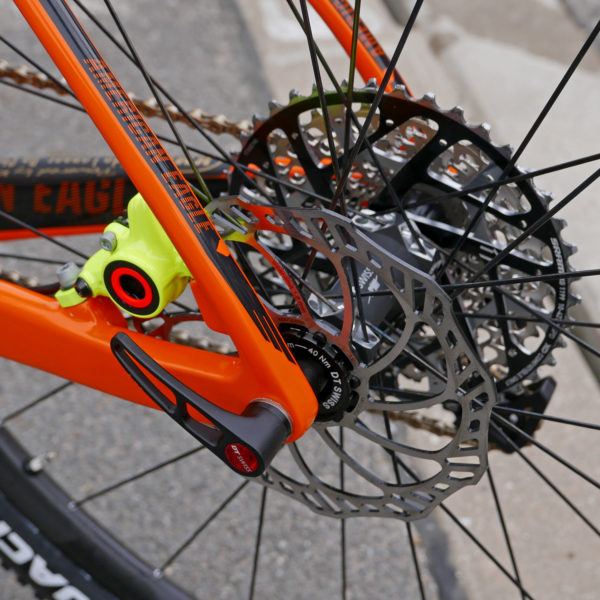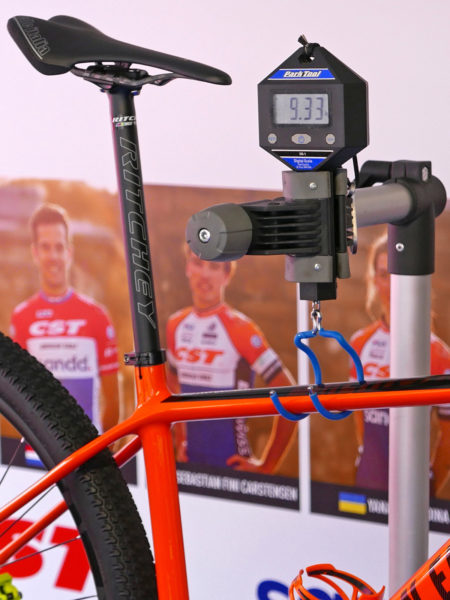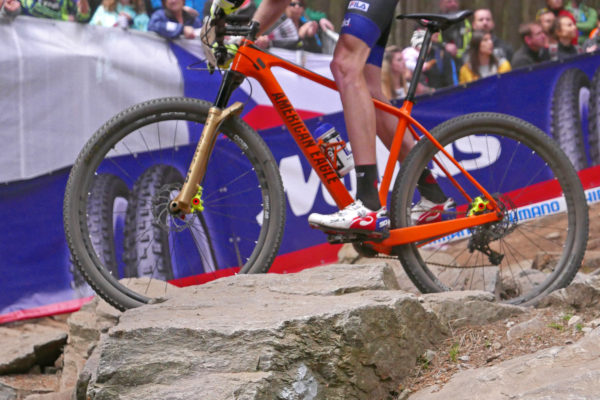A little more than 20 years ago, Dutchman Bart Brentjens rode an orange hardtail to the first ever Olympic Gold medal in mountain biking in Atlanta, GA. That custom-made hardtail bore the name American Eagle Atlanta. In the years since XC bikes have left aluminum construction behind and moved almost exclusively to carbon, so that’s also what Brentjens has done the new project. Having managed his own World Cup race team for several years, Brentjens leaned on his industry connections and experience to bring back the American Eagle brand name, and debuted its first new bike over the weekend at the Nové Město XCO World Cup. At first glance the complete built up Atlanta 2.0 frame doesn’t look like too revolutionary, but it does have some tricks up its sleeve. While designed as a race ready (now race proven) XC 29er, the all carbon bike is ready to take a beating so you don’t have to. Check out the full details and actual weights after the jump…
The Atlanta 2.0 doesn’t skirt away from being an Asian made frame, but it isn’t just some off-the-shelf bike out of a manufacturer’s catalog either. Brentjens wanted to develop a bike completely from the ground up that his World Cup team could race over the weekend, but still be affordable enough that regular amateur riders could get the same bike too.
That’s one reason that American Eagle has decided to go consumer-direct (keeping costs down), but they also see the need to build a dealer network to support buyers. Even with orders going out online, they’ve already set up a network of 25 dealers in their first markets of the Netherlands, Belgium and Luxembourg. Of course it depends on how sales go for the new brand, but American Eagle are already looking to expand that network further across Europe at first, and then beyond.
Built from Toray carbon fiber, the entirely carbon frame was designed to balance a quick, racy ride with the durability to withstand being bashed through a rock garden or two. That kept them form the highest modulus carbon, but also meant the frame even without alloy bearing seats or dropouts was still likely to hover at or around a 1kg claimed weight (for a Small). We weighed one of the team’s early production large frames and it came in at 1180g on our scale.
Detail-wise those behind the American Eagle rebirth were staying tight lipped on a lot. What we could get out of them was that a steep head angle for a tapered XC fork and short rear end were a priority.
That’s something we picked up on with the effectively curved seattube and short asymmetric chainstays, with space carved out to squeeze in the 29x 2.25″ CST tires the team had mounted. Other details we got from them was the now standard Boost spacing and direct mount 160mm rear brake.
With fully internal cable & housing routing there were plenty of good and easy to access holes in the frame to get to, and nothing but carbon inside the bottom bracket, headtube, or dropouts. (OK, there are alloy inserts for threads for the chainguide, rear brake, and derailleur hanger/thru-axle.) But the bottom bracket uses a hollowed out carbon tube that is molded into the frame and supports the PressFit cups.
Onto the side of its enormous, geometrically shaped bottom bracket cluster, the frame also includes a E2 type direct mount for a chain guide, or a front derailleur with SideSwing cable routing. The team bikes all opted with 1x drivetrains and included a direct mount guide from Ceetec.
The bike also gets a 27.2mm seatpost. With a steeply sloping toptube that means a lot of seatpost extension, which is designed to work with pencil thin seaststays to make for a comfortable ride at the saddle. That does limit the use of dropper seatpost, and as we saw riders benefiting from dropper posts on the up-and-down Nové Město course that could be an issue for those not so interested in the gram counting.
The team bike that the CST Sandd American Eagle Mountainbike Racing Team was racing also looks like it may be offered to consumers as well this fall. Built up with a SRAM XX1 Eagle drivetrain on the Atlanta 2.0 frame, it opts for a DT Swiss ODL fork in the team-only #GoldStandard finish.
The team also rides DT XRC 1200 Spline carbon wheels with CST Jack Rabbit or CST Beater tires of which we know very little (although most race bikes had blacked out Maxxis tires for course specific rocky, but dusty conditions.)
Braking is handled by bright yellow Magura MT8s, and cranks by Rotor’s Rex1 InPower power meter with QX1 eliptical Q-Ring chainrings.
Cockpit finishing is mostly with Ritchey WCS (including pedals), topped off by a Selle Italia SLR saddle. And the bikes all had KMC 11SL gold chains.
The complete team bike weighed in at 9.33kg (20.56lb) with pedals, a Tacx bottle cage, a gamin mount & race number, and those (maybe not so light) CST tires set up tubeless with a good scoop of sealant. (We watched them get mounted before the bike was ready to photograph.) In other words, actual ready to race weight.
American Eagle has officially announce that the Atlanta 2.0 will go out for full release in September, but hinted that some bikes might be available even earlier than that. For example, the team only had a few first production run bikes setup to race over the weekend. They were all in Large to suit the tallest riders, like this complete bike belonging to Dutch U23 David Nordemann and the one we caught out on the race course under UK National Champion Grant Ferguson
No word yet on how wide the sizing range will be beyond a the small to large offerings that were mentioned by the team, but we do know that five colors will be available if you don’t want to stick with the team orange commemorating Brentjens’ Atlanta ’96 winning bike.

